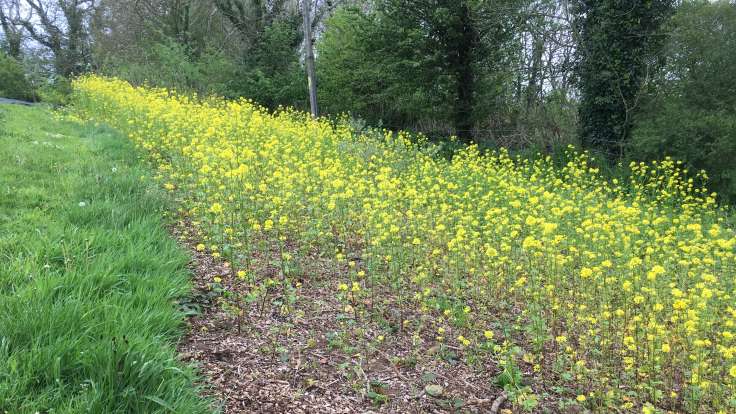
The temporary ground cover
A step-by-step guide to establishing a living ground cover: to protect the soil, create a habitat for wildlife and provide you with a harvest. Win, win, win.
A key principle of no-dig gardening is to always protect the soil with mulch. In a forest garden, the soil is protected by a living mulch, a ground cover plant. These are instructions for establishing the ground cover layer on a large area of grass.
- Kill the grass with sheet mulch. A quality, woven plastic sheet mulch is the cheapest, reusable option but it does involve plastic. Also, buy a large width (2-3 metres) to reduce the time spent preparing and buy a smaller amount of a higher quality and plan to rotate its use in the garden. Mow the grass first, then peg out the sheet mulch with metal pegs. Weigh it down with heavy things because otherwise it will blow away.
- Leave for 6-12 months. Six months is enough for the grass, 12 months, kills off deep-rooted perennials. The process works faster in summer, and it can take less than 6 months depending on conditions, so do check. Don’t leave for longer than 12 months, as grass will grow on top.
- Remove the sheet mulch, a process which can take some time! The earth should be brown and crumbly, with lots of vole and mice tunnels.
- Mark out and plant shrubs.
- Cover with wood chip or bark mulch. You can use wood chip as it doesn’t rob nitrogenPDF.
- Plant ground cover through the wood chip at about a half metre spacing, in a staggered fashion. You’ll need about 3-5 plants per m².
- Sow the temporary ground cover, which helps prevent weeds getting a hold until your ground cover established. Here in Wales, I use White Mustard Sinapsis alba, which is cheapest to buy in bulk, eg at the time of writing, 21 kilos from Cotswold Seeds £50 including postage, enough for a couple of acres. You could go dutch with someone.
Do remember that you will still need to weed until the ground cover plants are established. With something like Ground Ivy and Chilean Strawberry, this can be within the year, although evergreens like Lesser Periwinkle and Nepalese Raspberry I’ve found take longer. When you’re weeding, you can simply cut the tops of dandelion and plantain and drop them in situ. They will grow back but will die out after a couple of weedings. Grass on the other hand needs to be removed, although the roots don’t get established in the soil, just in the wood chip.
Photos of the process
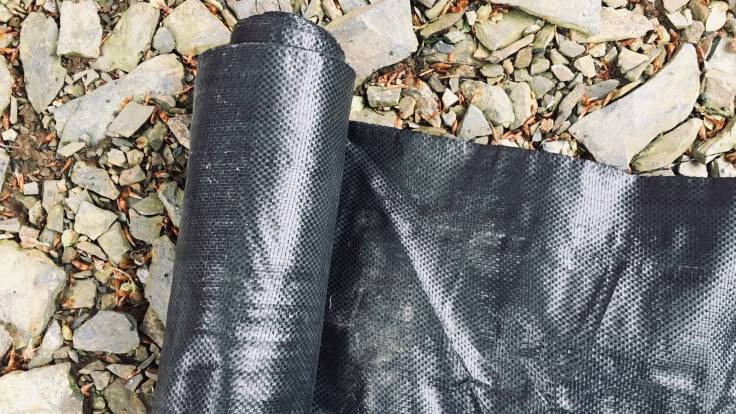
Woven plastic sheet mulch in a roll
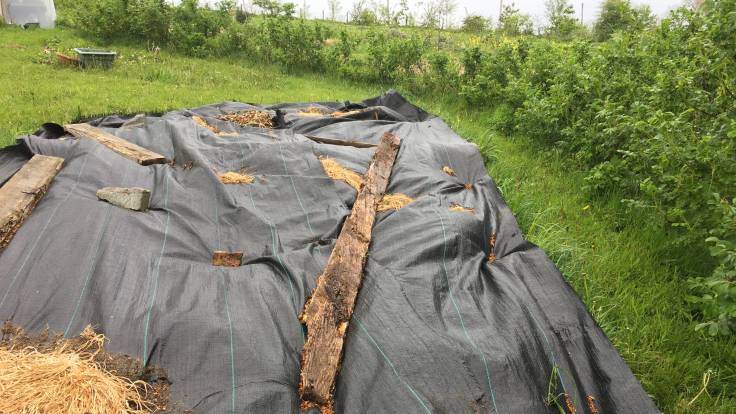
Make sure to weigh down the sheet mulch!
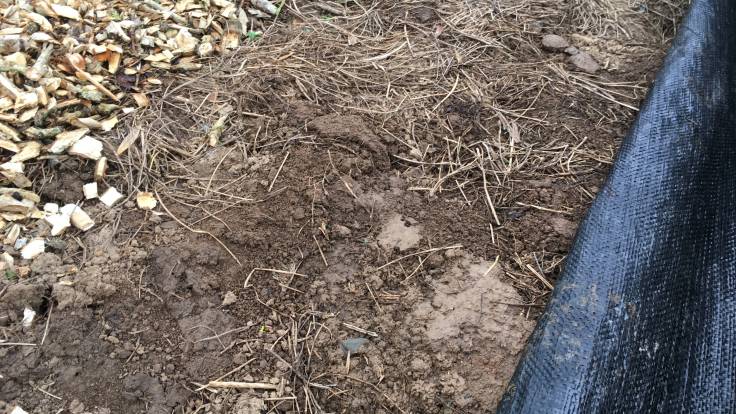
A weed free crumbly loam when you remove the sheet mulch
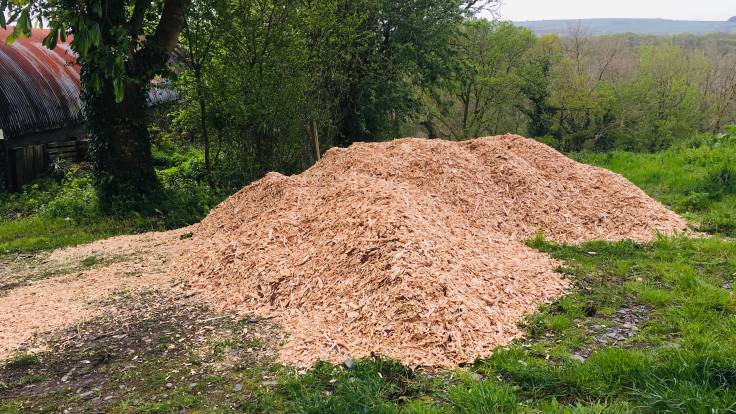
A pile of wood chip freshly delivered
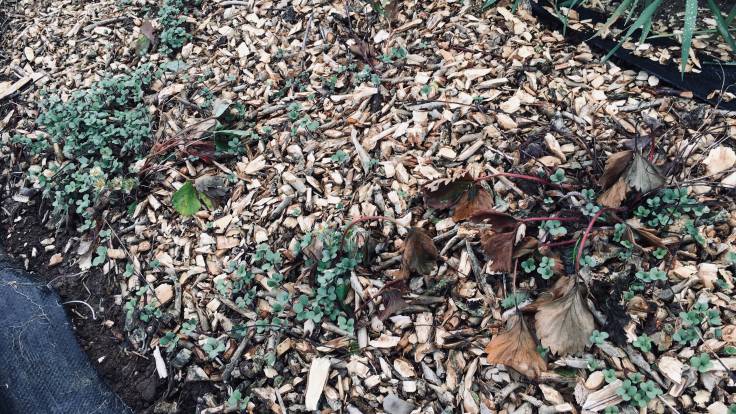
Ground cover strawberry planted into woodchip mulch, with mustard seedlings sprouting up
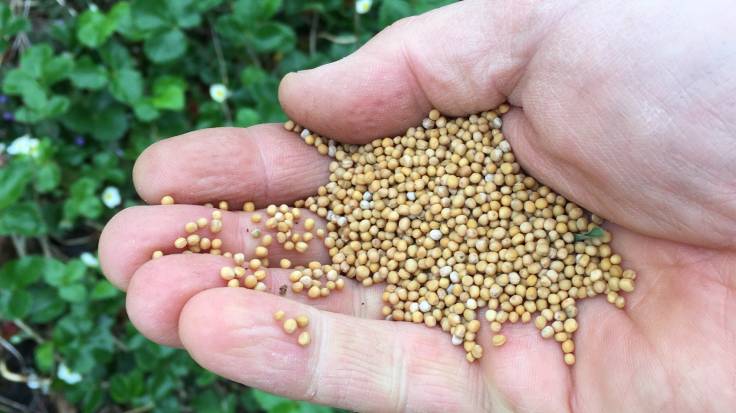
White Mustard (Sinapsis alba) seed, a temporary ground cover sown on top of the woodchip mulch

The temporary ground cover mustard in flower
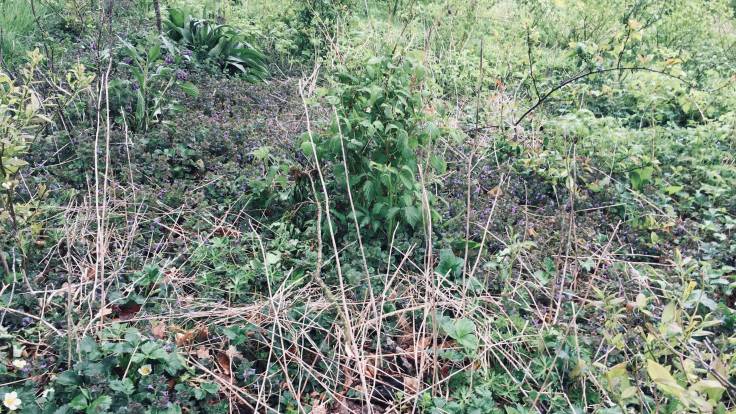
After a year, the temporary ground cover mustard has died back to stems that compost in situ